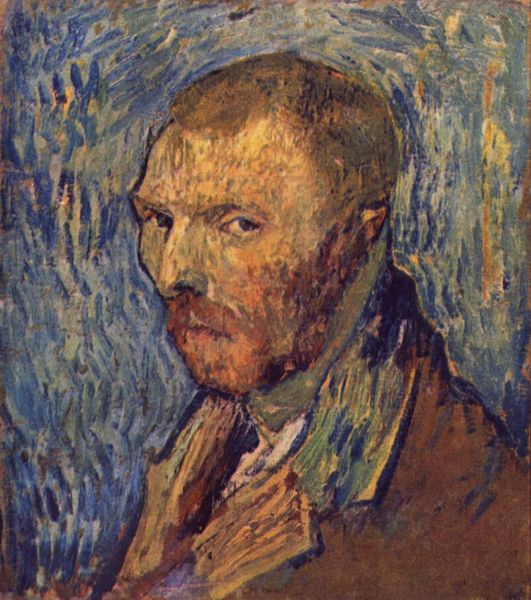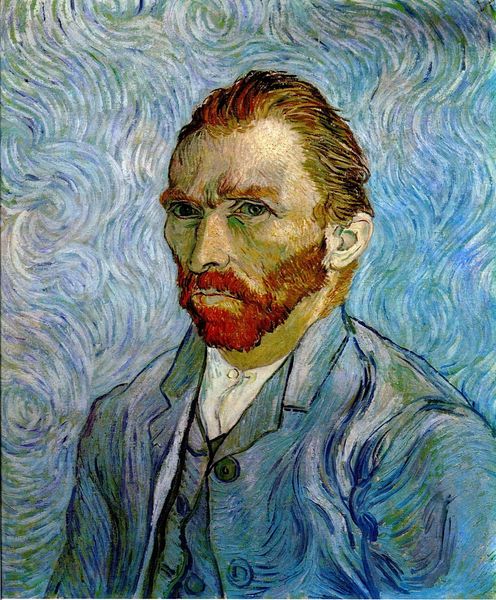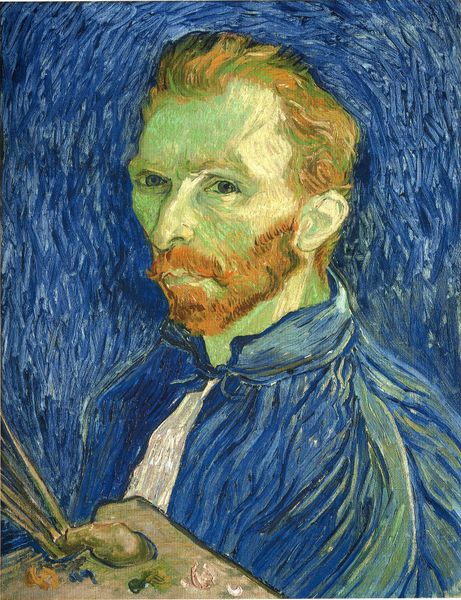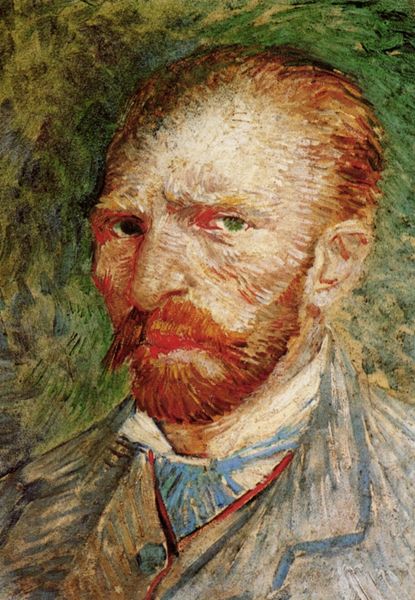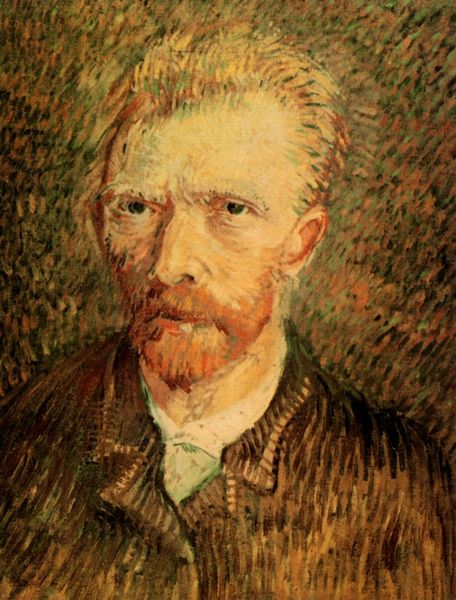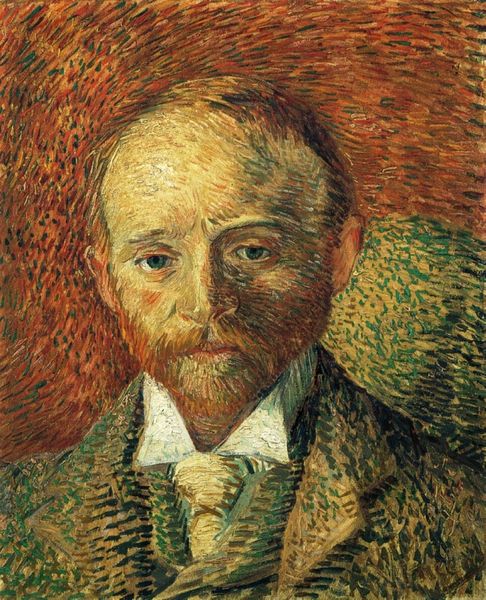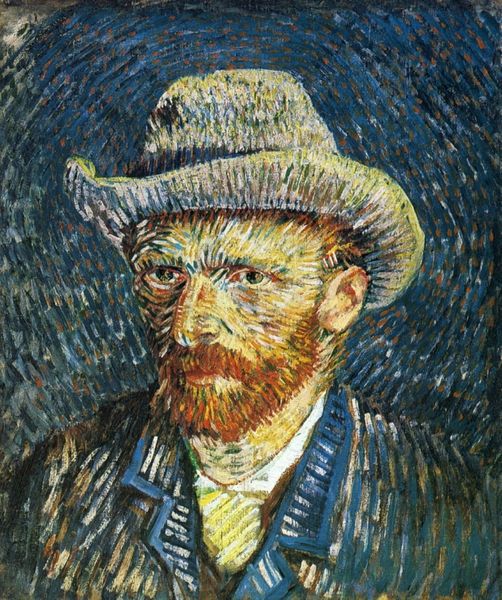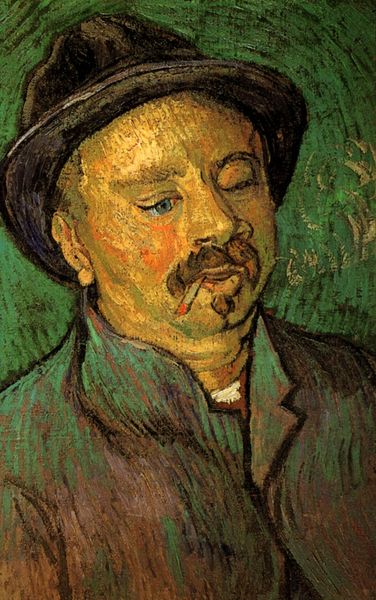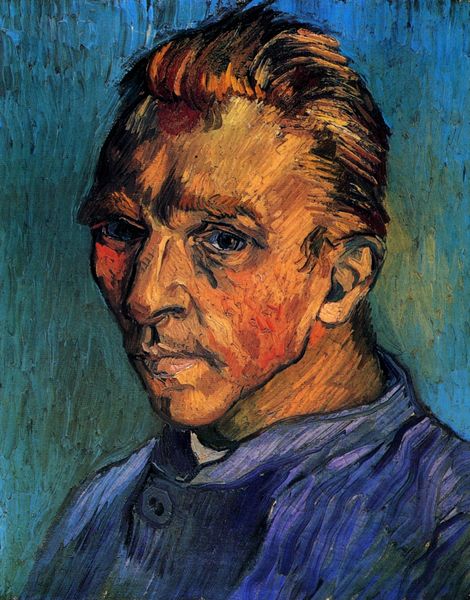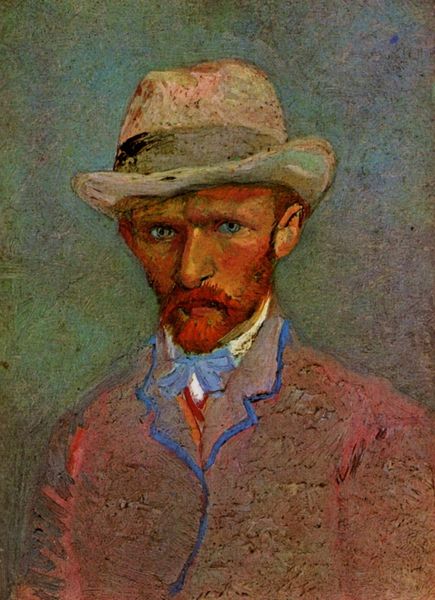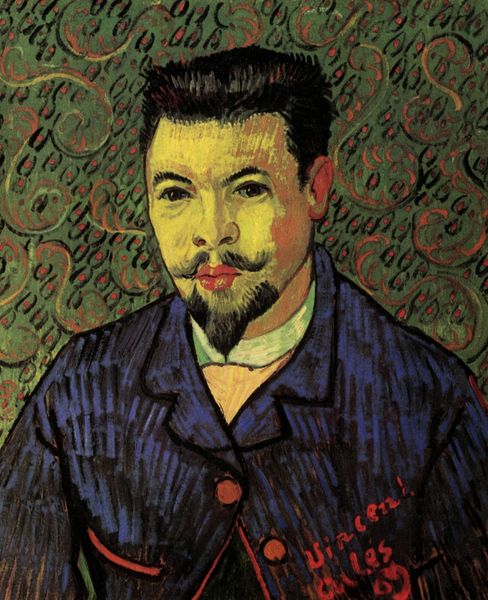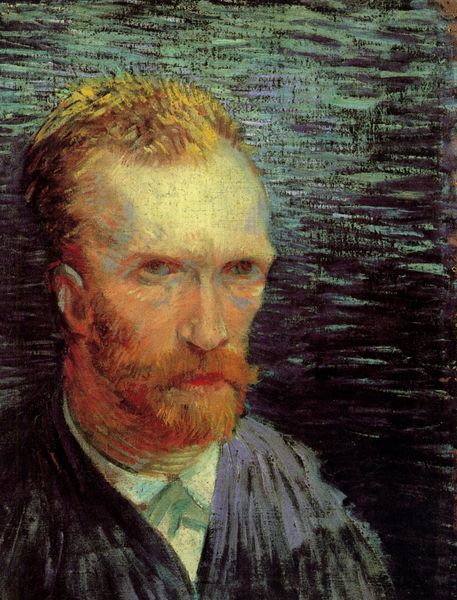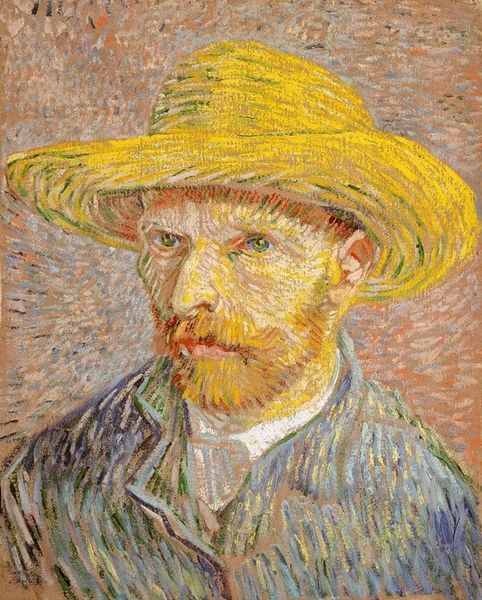
Copyright: Public domain
Curator: Here we see Van Gogh's "Portrait of Trabuc, an Attendant at Saint-Paul Hospital," painted in 1889, towards the end of his life. Editor: The man’s face immediately strikes me. There's a certain weariness, a profound sadness etched in the lines around his eyes and mouth. Curator: It's fascinating to consider how Van Gogh’s stay at Saint-Paul influenced his work. Trabuc, as an attendant, would have been one of Van Gogh's primary points of contact at the asylum, someone within a very specific power dynamic in that space. Editor: Yes, and Van Gogh captures Trabuc not just as an individual, but also the constraints imposed on him, the social implications of his role, and the inherent institutional critique suggested by it all. The rigid vertical lines of the jacket feel like prison bars. Is this just a visual motif, or commentary on control? Curator: Art history suggests it was painted during a period where Van Gogh was allowed more freedom within the hospital, a kind of "model patient" phase that allowed him to pursue painting once more. We see a tremendous focus on line and color to convey depth of feeling. He painted a companion portrait of Trabuc's wife as well. It is easy to see how art became his means of engaging in self-expression and personal exploration when his liberty was restrained. Editor: Looking closer, you see the impasto technique really emphasizing the texture of the skin, almost mapping his age, hardship, perhaps reflecting societal pressures as well as his individual experience of aging and his position in this hospital context. The brushstrokes capture light but also seem to reflect the weight of existence. Curator: Certainly, there's a tangible psychological depth to it. These works also give us a sense of the dynamics of an asylum from both perspectives; the artist/patient, and an individual working there. Editor: Considering the historical backdrop, this image also challenges norms of representation by imbuing the sitter with an unmistakable dignity. It transcends portraiture. I initially focused on individual sadness, but now it feels tied into the institution. Curator: That interplay between the individual and the institution truly adds a nuanced layer to its social meaning. Thank you for your unique interpretation! Editor: Indeed! The painting challenges and compels us.
Comments
No comments
Be the first to comment and join the conversation on the ultimate creative platform.
